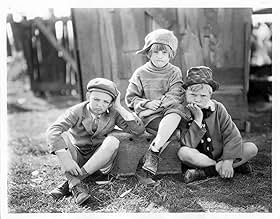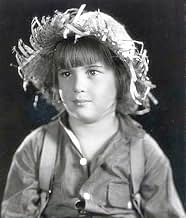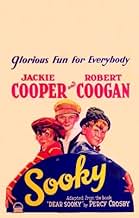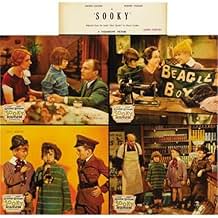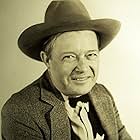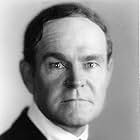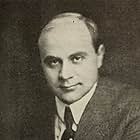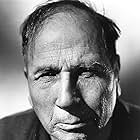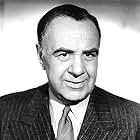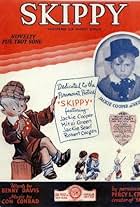Aggiungi una trama nella tua linguaSkippy, son of Dr. Herbert and Mrs. Skinner, adamantly stands by his poor friend Sooky Wayne, who lives in Shantytown with his sickly mother. The Boone Boys, a boys' club that costs $30 doll... Leggi tuttoSkippy, son of Dr. Herbert and Mrs. Skinner, adamantly stands by his poor friend Sooky Wayne, who lives in Shantytown with his sickly mother. The Boone Boys, a boys' club that costs $30 dollars to join and has uniforms that Sooky admires, refuses to admit him because he is poor. ... Leggi tuttoSkippy, son of Dr. Herbert and Mrs. Skinner, adamantly stands by his poor friend Sooky Wayne, who lives in Shantytown with his sickly mother. The Boone Boys, a boys' club that costs $30 dollars to join and has uniforms that Sooky admires, refuses to admit him because he is poor. Sooky and Skippy form their own club called the Beagle Boys.
- Boy
- (non citato nei titoli originali)
Trama
Lo sapevi?
- QuizOne of over 700 Paramount Productions, filmed between 1929 and 1949, which were sold to MCA/Universal in 1958 for television distribution, and have been owned and controlled by Universal ever since; its earliest documented telecast took place in Minneapolis Saturday 19 September 1959 on WTCN (Channel 11); it first aired in Seattle Friday 27 November 1959 on KIRO (Channel 7).
- ConnessioniFollows Skippy (1931)
SOOKY (Paramount, 1931), directed by Norman Taurog, reuniting most of the cast members (Jackie Cooper, Robert Coogan, Willard Robertson, Enid Bennett, Jackie Searle and Helen Jerome-Eddy) from Percy Crosby's comic strip characters in SKIPPY (Paramount, 1931), an immediate sequel about the friendship between two little boys living on opposite sides of the railroad tracks, is another good outing. Jackie Cooper and Robert Coogan reprise their original roles along with their wardrobes ("Skippy" in short pants, hat, large coat, white shirt with polka-dot tie, and Sooky with his over-sized dark striped holey sweater, large cap which covers most of his straight hair bangs, and knee-high pants). As before, Sooky frequently addresses his pal with the catch phrase, "Hi, ya, Skip!" or "Okay (pause), Skip!" as well as nervously jumping up and down whenever he gets happily excited. For now, this is Sooky's story.
In this second (and final) installment, based on Percy Crosby's story, "Dear Sooky," the plot revolves around Skippy spending the day with his best pal, Sooky (Robert Coogan) in Shantytown, where Skippy begins to show come concern over Skippy's mother (Helen Jerome-Eddy), who's been having occasional fainting spells lately. As for Sooky, this time he wants become a member of the Boomboys, and wear a uniform like a soldier. All that's keeping him from joining the Boomboys military club is its extremely unlikeable leader, Sidney Saunders (Jackie Searle). There's also a subplot involving Skippy's father, Dr. Herbert Skinner (Willard Robertson) running for mayor against candidate, Philip Saunders (Leigh Allen), Sidney's father. There's one funny sequence where Skippy, a true friend as he is, wanting Sooky to be an accepted member of the Boomboys, agreeing to help Sidney campaign for his father, unaware that by marching in the parade carrying a sign reading to "vote for Phillip Saunders" does Skippy realize he's standing in the crowd of people listening to his own father's electoral speech, making Mr. Skinner the laughing stock.
Featured in the supporting cast are Harry Beresford (Mr. Willoughby, Skippy's neighborhood friend who loses his home and taken to a shelter); Gertrude Sutton (Hilda); Guy Oliver (Mr. Moggs); and George "Gabby" Hayes. Mitzi Green, who appeared as Sidney's sister in SKIPPY, is noticeably missing this time out.
Not as well-known or revived as SKIPPY, SOOKY, capitalizing on the success its predecessor, is well characterized by the cast, especially those two principal players (Cooper and Coogan), acting out their roles in a carefully constructed story, compliments of Joseph Mankiewicz, Norman McLeod and Sam Mintz. Director Norman Taurog presents Skippy and Sooky as the modernized carnation to Mark Twain's beloved boy characters of Tom Sawyer and Huckleberry Finn, going as far as showcasing these two young boys from different backgrounds, one poor and the other middle class, through their daily activities of innocent fun, but minus the painting of a wooden fence and travels along the Mississippi. As with Tom and Hunk, there's also an unlikeable character named Sidney (no different from Jackie Searle's characterization of Sidney Sawyer as performed by him in both TOM SAWYER (1930) and HUCKLEBERRY FINN (1931)), indicating that even children could be "little devils" and instigators, as portrayed in many films by Jackie Searle. Taurog brings out the good as well as the bad side in the likes of children, and as in SKIPPY, "pulls no punches," with the exception of Skippy having Sidney get to the full feel of his fist placed on his jaw. Once again, Jackie Cooper shoots off his waterworks of tears with another sad situation pertaining to the death of Sooky's mother. Although the story leaves open for another sequel, it's something that never happened. The adults play an important part in this story as well, bringing forth Willard Robertson as Skippy's father who not only has to keep his standing as the husband and father, but take the time to show that a father can be the one to come to for comfort and understanding, in spite of times when the father can't find time to be with his son in his time of need; Enid Bennett resuming her role as Skippy's understanding mother; and Helen Jerome Eddy's performance as Sooky's ill-fated mother in a commendable performance.
By this time of this release, Jackie Cooper was at the height of his career and had recently scored success at MGM, where he remained for the next few years, after being cast opposite Wallace Beery in THE CHAMP (1931). As for Bobby Coogan, Jackie Coogan's look-alike younger brother, he never achieved the popularity Jackie did in the 1920s, and after a couple of more films, drifted to obscurity, returning occasionally in second features during his adulthood. SKIPPY would never referred to again until ten years later when the now adult Jackie Cooper, who returned to Paramount by 1939, appearing in a Hollywood-based comedy titled GLAMOUR BOY (1941) casting him as in which he played a former child star looking for a youngster to appear in a remake of his movie hit, SKIPPY. Clips from the original SKIPPY were shown as observed by the older Cooper. As fate would have it, a remake or a new movie series based on "Skippy" never materialized.
SOOKY, along with SKIPPY, were each resurrected briefly on the USA cable network back in the 1980s, making its final showing on that network on a double bill during the late night hours in 1988. While not in the same league as SKIPPY, which also brought forth Warner Brothers' own children's tale of PENROD AND SAM featuring Leon Janney and Junior Coughlan, also in 1931, SOOKY is a pleasant, moderately entertaining, warm and human comedy drama that should make recommended viewing for kids and adults alike. (***)
I più visti
- How long is Sooky?Powered by Alexa
Dettagli
- Data di uscita
- Paese di origine
- Lingua
- Celebre anche come
- Martírio Ditoso
- Luoghi delle riprese
- Azienda produttrice
- Vedi altri crediti dell’azienda su IMDbPro
- Tempo di esecuzione1 ora 25 minuti
- Colore
- Proporzioni
- 1.20 : 1
Contribuisci a questa pagina


